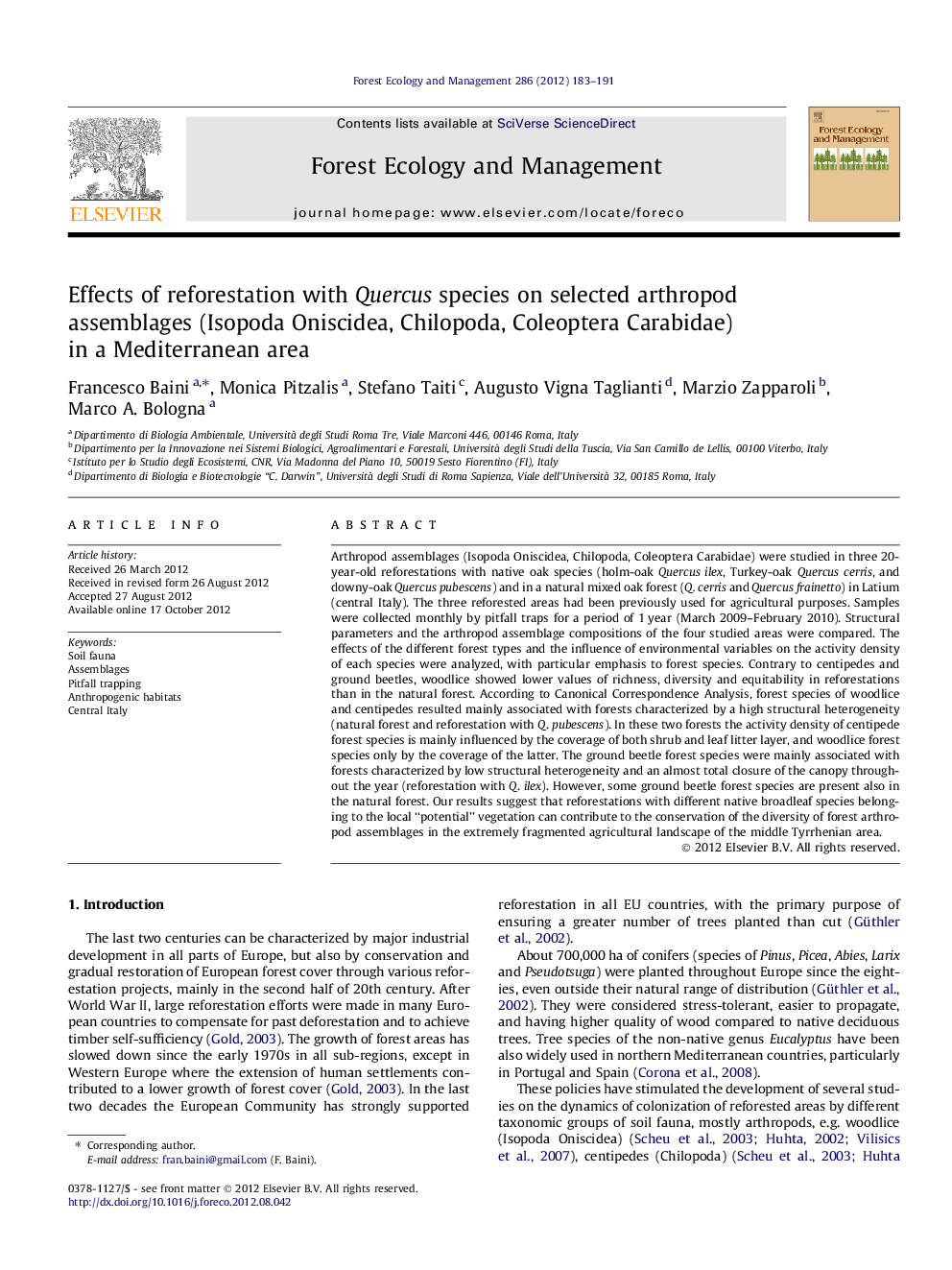| کد مقاله | کد نشریه | سال انتشار | مقاله انگلیسی | نسخه تمام متن |
|---|---|---|---|---|
| 87389 | 159248 | 2012 | 9 صفحه PDF | دانلود رایگان |

Arthropod assemblages (Isopoda Oniscidea, Chilopoda, Coleoptera Carabidae) were studied in three 20-year-old reforestations with native oak species (holm-oak Quercus ilex, Turkey-oak Quercus cerris, and downy-oak Quercus pubescens) and in a natural mixed oak forest (Q. cerris and Quercus frainetto) in Latium (central Italy). The three reforested areas had been previously used for agricultural purposes. Samples were collected monthly by pitfall traps for a period of 1 year (March 2009–February 2010). Structural parameters and the arthropod assemblage compositions of the four studied areas were compared. The effects of the different forest types and the influence of environmental variables on the activity density of each species were analyzed, with particular emphasis to forest species. Contrary to centipedes and ground beetles, woodlice showed lower values of richness, diversity and equitability in reforestations than in the natural forest. According to Canonical Correspondence Analysis, forest species of woodlice and centipedes resulted mainly associated with forests characterized by a high structural heterogeneity (natural forest and reforestation with Q. pubescens). In these two forests the activity density of centipede forest species is mainly influenced by the coverage of both shrub and leaf litter layer, and woodlice forest species only by the coverage of the latter. The ground beetle forest species were mainly associated with forests characterized by low structural heterogeneity and an almost total closure of the canopy throughout the year (reforestation with Q. ilex). However, some ground beetle forest species are present also in the natural forest. Our results suggest that reforestations with different native broadleaf species belonging to the local “potential” vegetation can contribute to the conservation of the diversity of forest arthropod assemblages in the extremely fragmented agricultural landscape of the middle Tyrrhenian area.
► Effect of reforestation on three soil arthropod groups are studied in Central Italy.
► Three artificial and one native Quercus forests were compared by pitfall trapping.
► Forest woodlice and centipede species are associated with highly structured forests.
► Forest carabid species are associated with less structurally heterogeneous forest.
► Reforestation with native species best supports conservation of forest zoocoenoses.
Journal: Forest Ecology and Management - Volume 286, 15 December 2012, Pages 183–191